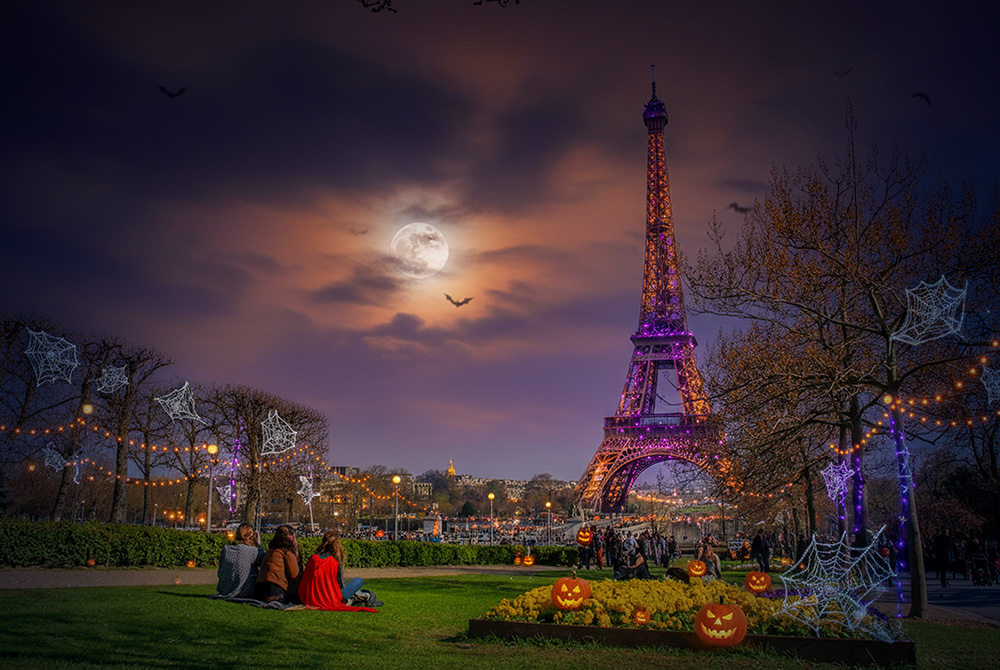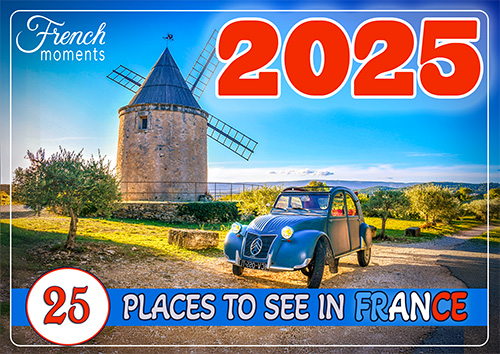Each October, Halloween in France makes its appearance: pumpkins, ghosts and cobwebs begin to fill shop windows across the country.
Yet, while Halloween is one of the most popular festivities in America, its place in French culture remains far more uncertain.
For some, Halloween in France is a chance to dress up, carve pumpkins and enjoy a playful evening with family and friends.
For others, it feels like an American import—commercial, superficial, and even out of step with French traditions.
The proximity of All Saints’ Day (La Toussaint), a solemn Catholic holiday on 1 November, adds to the cultural tension: one celebration is about family remembrance and flowers on the graves, the other about costumes, sweets and spooky fun.
This article explores the story of Halloween in France—how it arrived, how it has evolved over the past three decades, the controversies it has sparked, and how it differs from the way Halloween is celebrated in the United States.
Origins and Arrival of Halloween in France
Ancient Roots of Halloween
The origins of Halloween stretch back over two millennia to the Celtic festival of Samhain, marking the end of the harvest season in Ireland and Scotland.
On this night, people believed that spirits could cross into the world of the living, so bonfires were lit and costumes worn to ward off evil.
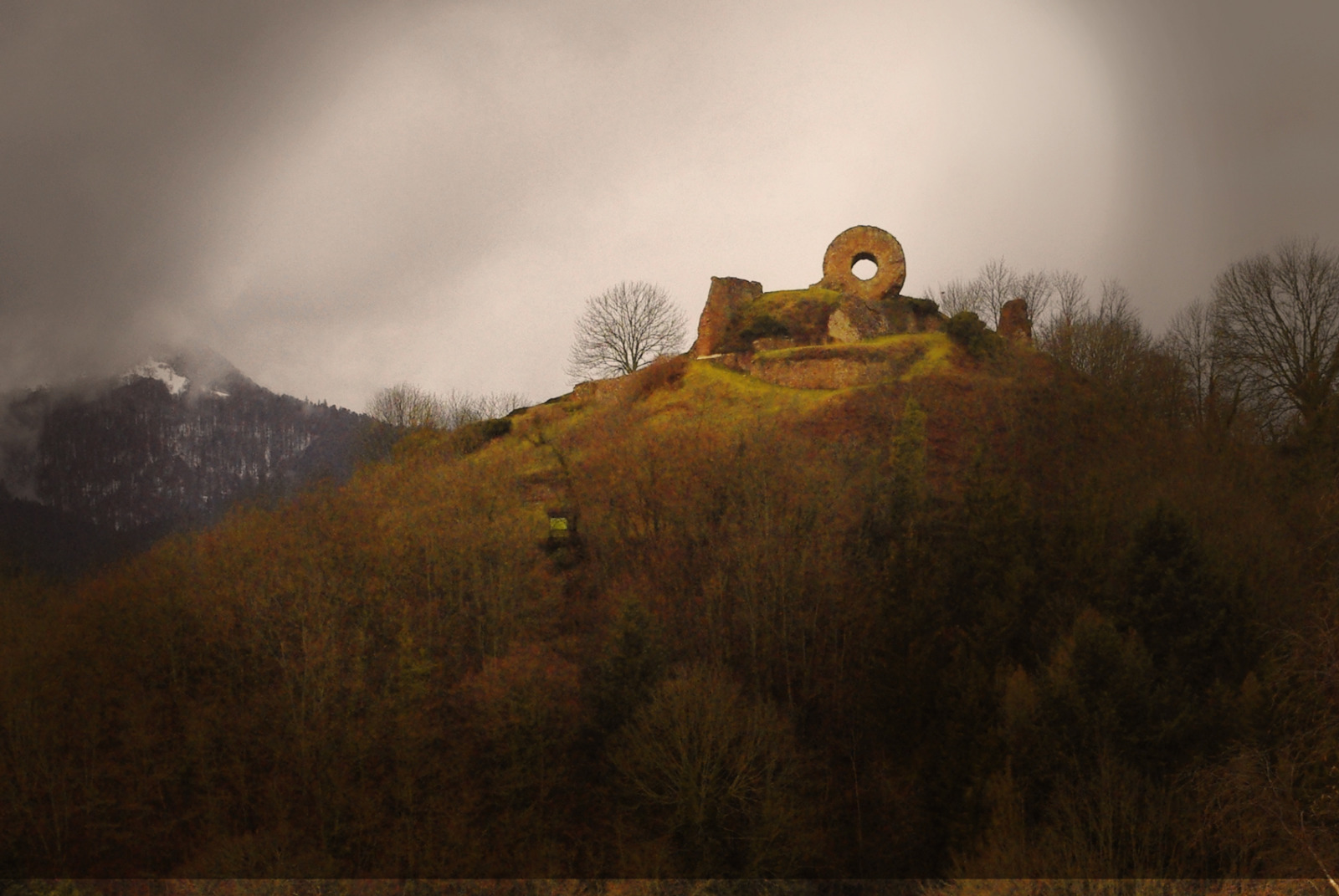
Halloween in Alsace - The eye of the witch in Thann © French Moments
When Christianity spread across Europe, the Church repurposed these pagan customs.
By the 9th century, 1 November was established as All Saints’ Day (La Toussaint), with the evening before known as All Hallows’ Eve.
The blending of old Celtic beliefs with Christian practices created the foundation of what we now call Halloween.
In the nineteenth century, Irish migrants carried their customs to North America, where Halloween transformed into a community celebration.
By the 1930s, trick-or-treating had become a fixture, and the carved pumpkin—Jack O’Lantern—was firmly established as the holiday’s symbol.
Today, Halloween in the United States is a cultural juggernaut, generating billions of dollars in spending each year.
The Arrival of Halloween in France (1990s)
By contrast, Halloween in France has no ancient lineage.
Its introduction was not through migration or folklore but through global marketing strategies.
In the 1990s, major companies identified a gap in the French festive calendar: a lull between the rentrée in September and Christmas in December.
- Disneyland Paris began staging Halloween-themed events in 1992.
- McDonald’s and Coca-Cola rolled out autumn promotions with pumpkins, ghosts, and black cats.
- In 1997, the phone operator France Télécom (Orange) launched its memorable “Olaween” campaign, distributing thousands of pumpkins in the streets of Paris.
The commercial impact was immediate.
Shops filled with costumes, sweets and decorations.
By the turn of the millennium, Halloween in France was considered the third-largest retail event of the year, after Christmas and New Year’s.
Supermarkets dedicated aisles to orange and black products, and the media announced the birth of a new seasonal tradition.
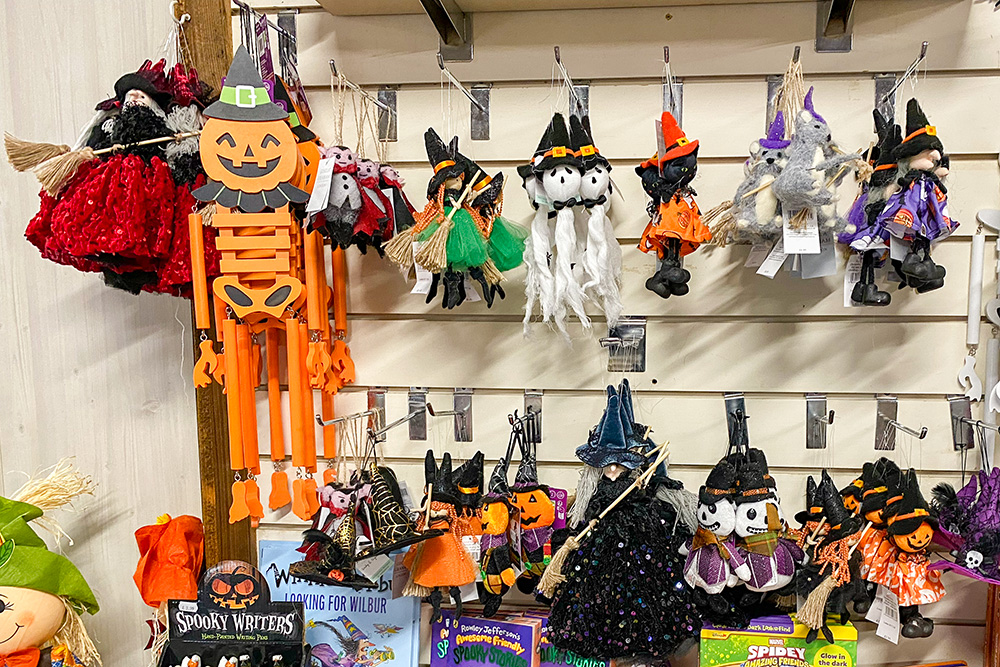
Halloween items in a supermarket © French Moments
Early French Reactions and Local Anecdotes
Despite the marketing success, early French encounters with Halloween were mixed and often coloured by local traditions.
Lorraine’s “Rommelbootzennaat”: In parts of Moselle, children were already carving grimacing faces into hollowed-out beetroots, a custom dating back centuries. When pumpkins suddenly appeared in supermarkets in the late 1990s, some locals saw it as a “bigger, Americanised version” of their own tradition.
Parisian nightlife: Halloween first took hold in the capital’s bars and nightclubs. In 1999, Coca-Cola sponsored a massive Halloween party at the Zénith in Paris, with DJs, costumes, and corporate branding everywhere—a far cry from a family tradition.
Village schools: Teachers in smaller towns experimented with Halloween-themed English lessons, asking pupils to draw witches or learn phrases like “trick or treat”. Parents were sometimes surprised, as they had never celebrated the day themselves.
Mixed feelings in rural France: In provincial villages, reactions were sceptical. Some shopkeepers decorated their windows with pumpkins, but neighbours dismissed the event as “une fête commerciale venue d’Amérique”. Many preferred to focus on preparing chrysanthemums for Toussaint.
These local anecdotes reveal why Halloween in France grew so quickly yet unevenly.
In cosmopolitan centres like Paris or Lyon, it was embraced as a novelty.
In more traditional regions, it clashed with established customs and values, setting the stage for the controversies of the 2000s.
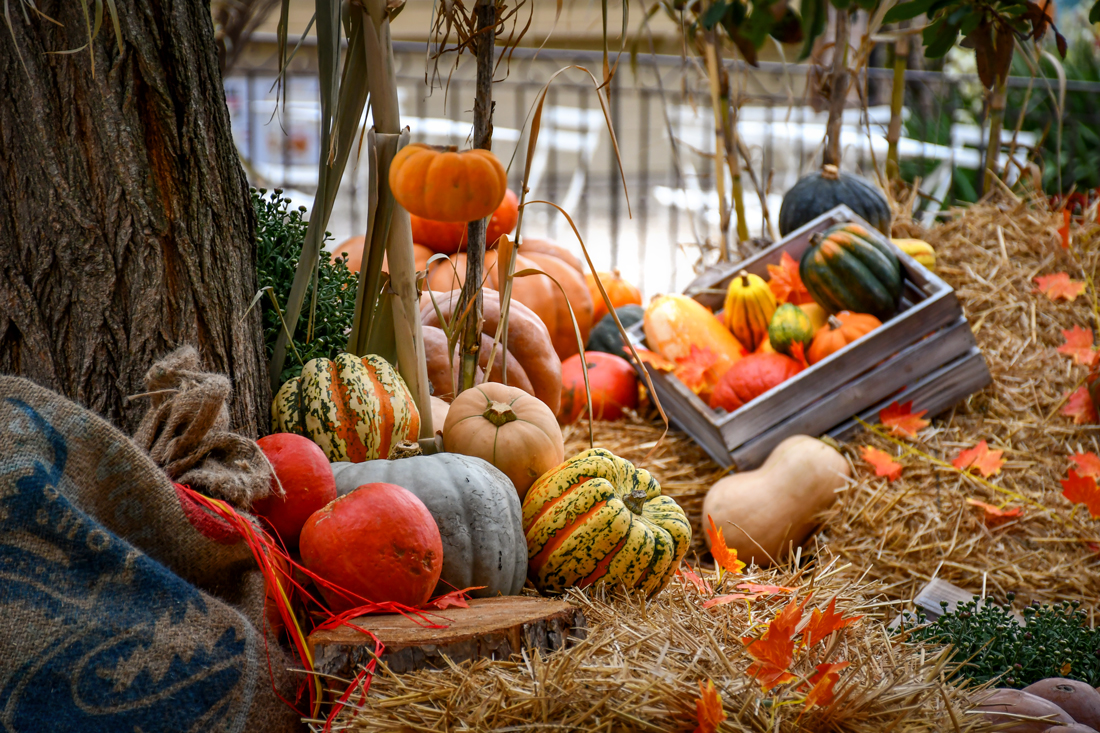
Provence in Autumn - La Barben Zoo © French Moments
Decline of Halloween in France in the 2000s
From Boom to Backlash
After its dazzling rise at the end of the 1990s, Halloween in France quickly lost momentum in the early 2000s.
By 2001–2002, the enthusiasm that had seemed unstoppable began to fade.
What had looked like the birth of a new French tradition turned out to be a fragile phenomenon heavily dependent on marketing campaigns.
French newspapers reflected this sudden reversal: in 2006, Le Parisien bluntly declared, “Halloween is dead.”
Supermarket managers noted declining sales of costumes and decorations, and some retailers quietly reduced the shelf space dedicated to Halloween products.
Why Did Halloween Falter?
Several factors explain this swift decline:
Over-commercialisation: Many French people felt that Halloween had been imposed by advertising rather than adopted naturally. The sight of shelves overflowing with plastic pumpkins, synthetic cobwebs, and bags of sweets was more irritating than enticing for some consumers. In surveys, more than 80% of respondents described Halloween as “too commercial” or “too American.”
Cultural resistance: Unlike in the US or Ireland, Halloween in France lacked historical roots. Families did not pass down traditions, and many adults had never experienced Halloween as children. This cultural gap made it harder for the festival to become a genuine part of French life.
Competition from La Toussaint: The solemn family rituals of All Saints’ Day overshadowed Halloween’s playfulness. Many people saw the two events as contradictory: one focused on remembrance, the other on pranks and spooky fun. In a society where visiting cemeteries on 1 November remained widespread, Halloween felt out of place.
Anti-American sentiment: In the early 2000s, geopolitical tensions such as the Iraq War amplified distrust of US influence. Halloween, perceived as a cultural import, became a symbol of unwanted Americanisation.

Autumn colours at Place de la Fontaine © French Moments
Anecdotes from Everyday France
The decline was visible in daily life.
By 2005, far fewer children knocked on doors with the French version of “trick or treat” (“des bonbons ou un sort”).
Many households who stocked up on sweets found no one came to ring their bell.
Supermarkets that once dedicated aisles to Halloween gradually shifted back to promoting chocolate and autumn products for Toussaint.
In rural areas, some parents actively discouraged Halloween, calling it “a fad with no meaning here.”
Even in schools, teachers who had embraced Halloween as a fun English-language activity faced complaints from families who considered it irrelevant or inappropriate.
Halloween’s Lowest Point
By the mid-2000s, Halloween in France had gone from sensation to near irrelevance.
National sales figures showed that purchases linked to Toussaint—particularly flowers such as chrysanthemums—far outstripped Halloween-related spending.
In symbolic terms, Halloween could not compete with a tradition that was centuries old and deeply rooted in French culture.
In many ways, this period revealed the limits of importing a festival wholesale from abroad.
Without a strong cultural foundation, Halloween in France seemed destined to remain a curiosity rather than a national celebration.
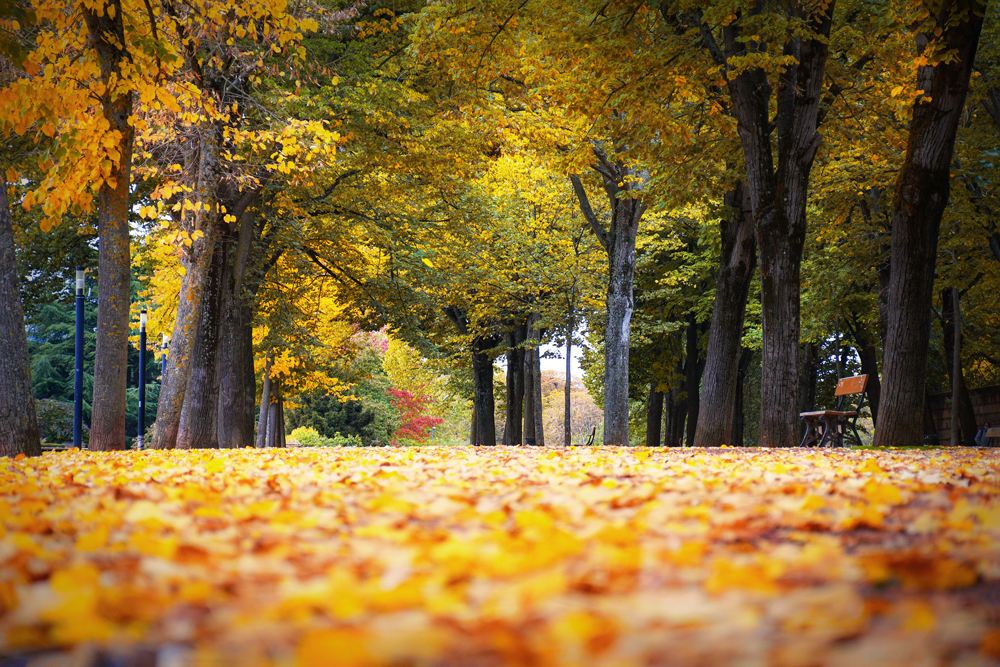
The colours of autumn in Metz © French Moments
Revival of Halloween in France since the 2010s and Post-2020
A Slow Comeback in the 2010s
After the decline of the mid-2000s, Halloween in France might have seemed doomed.
Yet from the early 2010s, signs of a cautious revival began to appear.
Bars and nightclubs in major cities like Paris, Lyon and Marseille embraced Halloween as a theme for parties.
Families with young children also started adopting the tradition in a lighter, less commercial way—carving pumpkins, dressing up, or baking Halloween-themed cakes at home.
Media coverage began to speak of a “return of Halloween.” In 2015, many journalists noted that French children seemed more excited by the prospect of costumes and sweets than their parents had been fifteen years earlier.
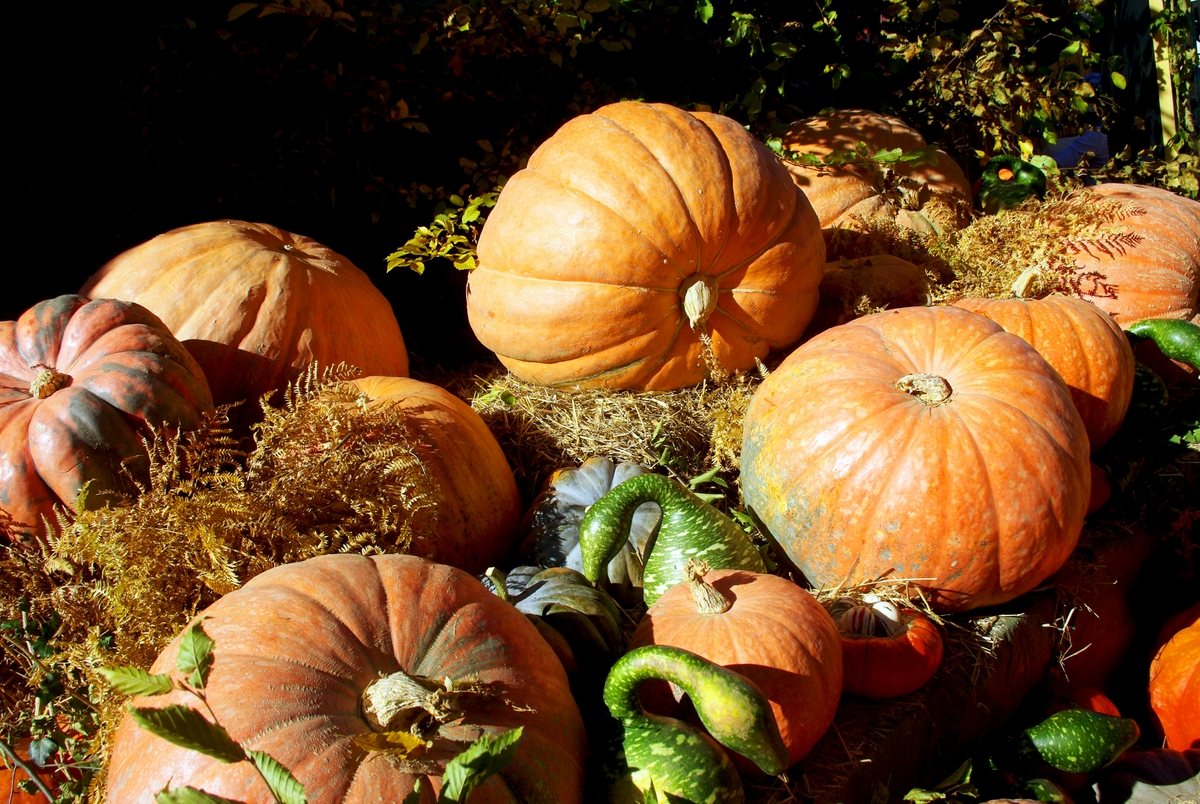
Pumpkins in Annecy, France © French Moments
The Role of the Younger Generation
A key driver of this revival was generational change.
The 25–34 year-olds of the 2010s had themselves been children during Halloween’s first wave in the 1990s.
For them, it was no longer an alien festival imposed by supermarkets but a nostalgic memory of school activities and pumpkin lanterns.
As parents, they began to pass the tradition on to their children, creating the first small seeds of continuity.
At the same time, social media accelerated the spread of Halloween imagery. Instagram, YouTube and later TikTok showcased costumes, make-up tutorials and spooky décor ideas, inspiring French teens and young adults to embrace Halloween with enthusiasm.
A Post-COVID Boom
The pandemic year of 2020 was a setback, with parties cancelled and children unable to go trick-or-treating.
Yet the following years saw a dramatic rebound. In 2021, confectionery sales during Halloween rose by over 16% compared to 2020, and by 2022, 61% of French people reported celebrating Halloween in some way—whether through sweets, costumes, or decorations.
The youth played a decisive role in this rebound: 76% of 18–24 year-olds declared celebrating Halloween in 2022, compared to far fewer among older generations.
This generational enthusiasm has made Halloween increasingly visible in urban France, from decorated shopfronts to themed events in schools and cultural centres.
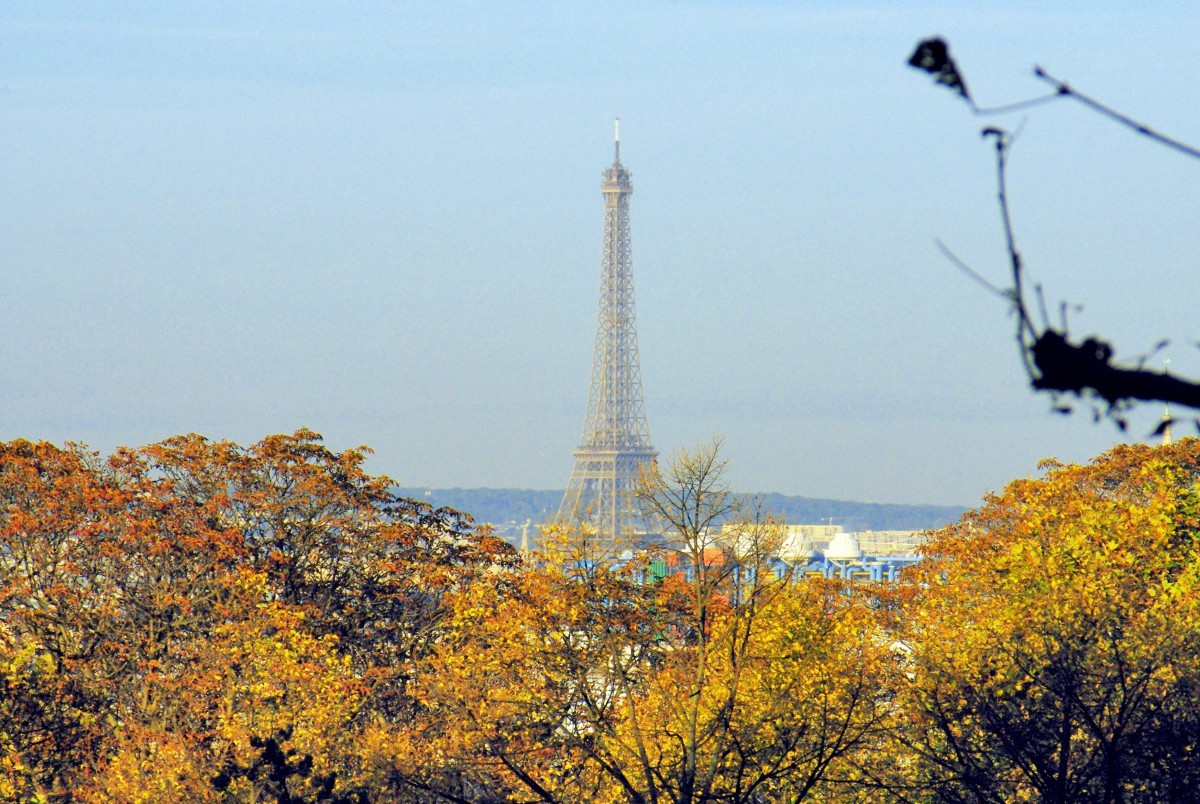
View of the Eiffel Tower from the Père Lachaise cemetery © French Moments
A Celebration with Limits
Despite this revival, Halloween in France remains ambivalent.
Surveys show that while a majority of French people take part in some way, only a small minority consider it an “important” festival.
Older generations continue to dismiss it as commercial or foreign, and in rural areas, it is still rare to see groups of children knocking on doors.
Yet compared to the bleak picture of the 2000s, Halloween has clearly secured a new foothold in French cultural life.
It has shifted from being seen as an American fad to becoming a seasonal celebration, particularly cherished by young people, families, and urban communities.
Halloween in French Schools and the Question of Laïcité
Halloween as a Pedagogical Tool
In recent years, Halloween in France has found a natural place in schools, especially primary classes.
Teachers use it to make English lessons more engaging: pupils learn simple vocabulary (witch, pumpkin, ghost, bat), sing songs, or take part in Halloween-themed games.
Some schools even organise creative writing workshops where children compose spooky stories, or art projects with carved pumpkins and paper skeletons.
This educational framing has helped to legitimise Halloween as more than just a commercial fad—it becomes a cultural and linguistic resource, a way to introduce pupils to the customs of English-speaking countries.
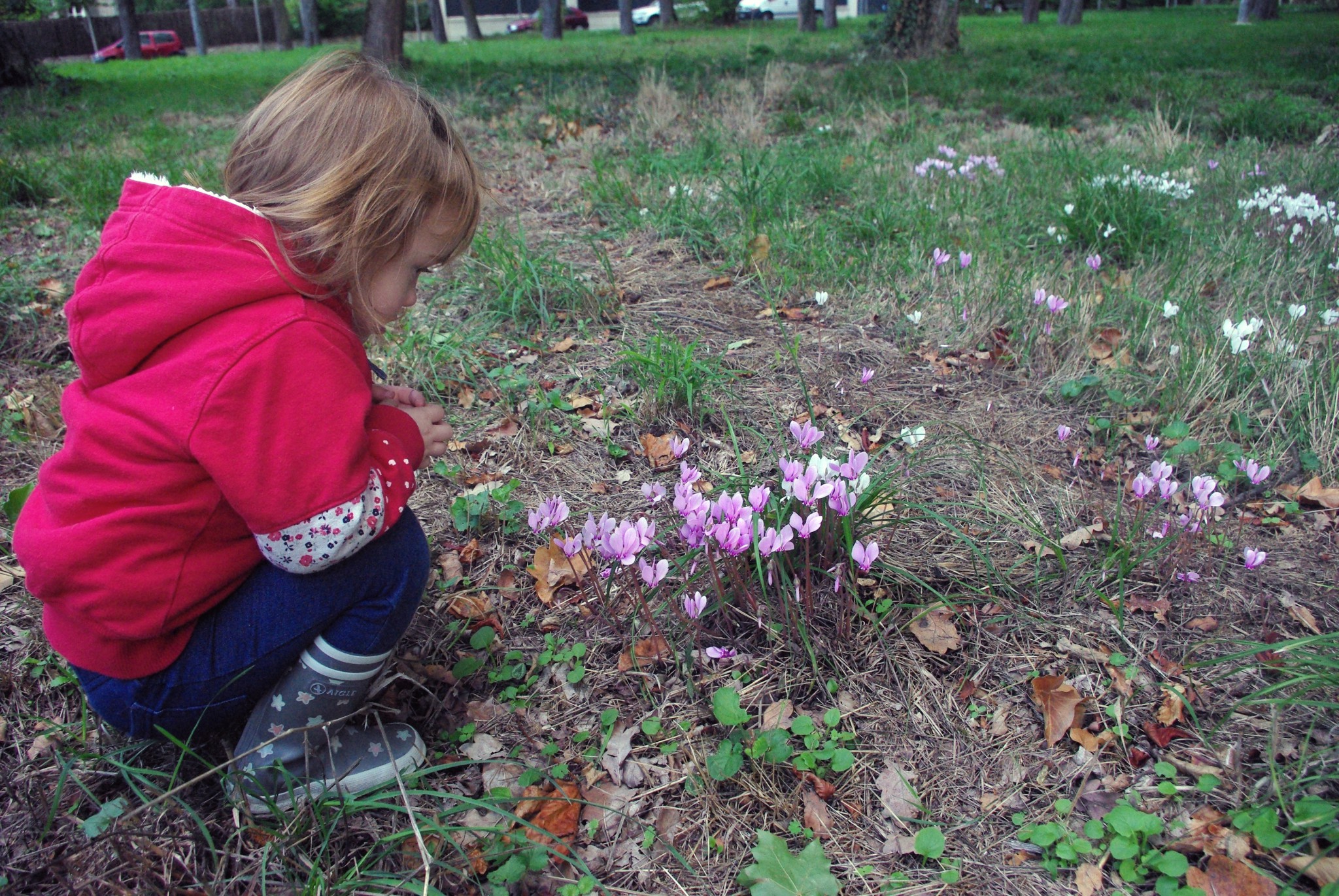
Autumn flowers © French Moments
A Celebration… But Not Without Tensions
Despite this success in the classroom, Halloween at school can be controversial.
Some parents object for religious or cultural reasons.
Catholic families sometimes see Halloween as trivialising death and distracting from the solemnity of All Saints’ Day. Evangelical Christians, Jehovah’s Witnesses and some Muslims reject it as an occult or pagan celebration.
Other parents dislike Halloween for cultural reasons: they see it as an artificial, Americanised event with no place in French schools.
A few even criticise the costume culture as socially unfair, since not all families can afford to buy outfits for their children.
As a result, some schools ban costumes altogether and focus instead on crafts, drawings, or stories.
Laïcité and the Neutrality of the Public School
The French principle of laïcité—secularism—adds another layer to the debate.
Public schools must remain neutral in religious matters, which rules out the celebration of explicitly religious holidays.
But Halloween, though it has distant pagan and Christian roots, is today classified as a secular cultural festival.
The Ministry of Education allows schools to mark Halloween as long as it is presented in a neutral, educational way, without religious symbolism.
It is treated much like Christmas in schools: stripped of religious references, it can be used to encourage creativity and cross-cultural learning.
That said, schools cannot impose participation. Activities are usually optional, and pupils who do not take part are given alternatives.
The goal is to promote inclusion while respecting family convictions.
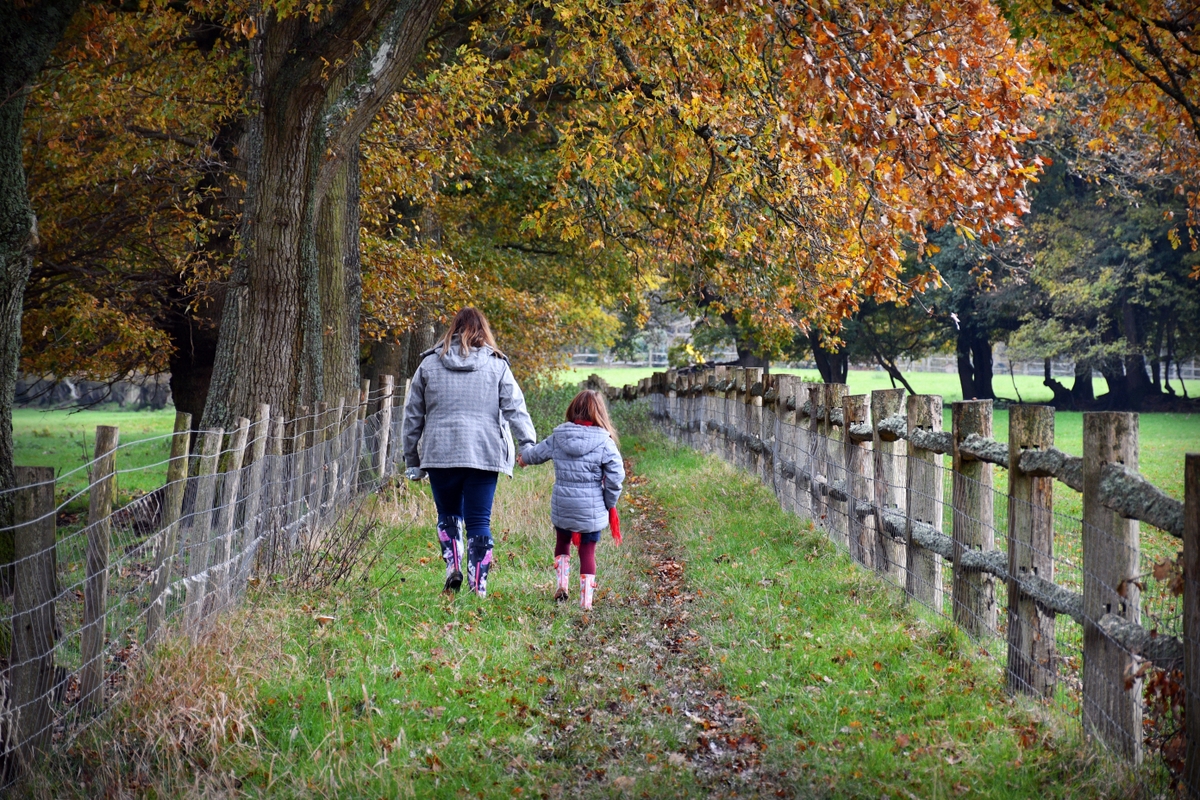
Walking in the countryside © French Moments
Local Examples
- In Paris and Lyon, some primary schools organise Halloween parades within the playground, encouraging pupils to wear simple costumes and recite English phrases like trick or treat.
- In smaller towns, teachers often limit the celebration to art projects or themed vocabulary lessons.
- In religious or Montessori schools, Halloween is sometimes replaced by seasonal autumn festivals (pumpkin harvest, autumn leaves) to avoid conflict with families opposed to the holiday.
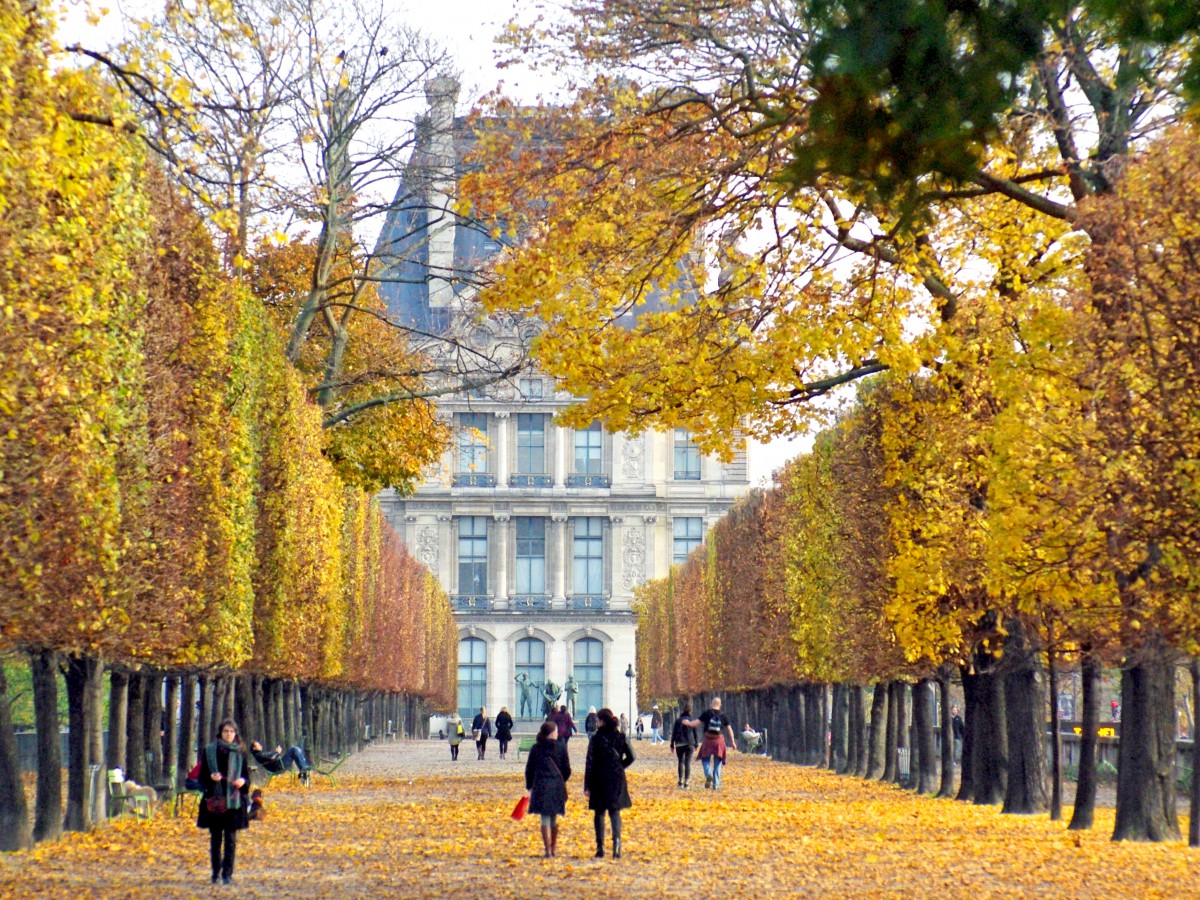
Autumn in France by the Louvre in Paris © French Moments
A Balancing Act
Halloween in French schools illustrates the delicate balance between cultural openness and secular neutrality.
On one hand, it offers a fun, engaging way to connect pupils with global traditions.
On the other hand, it risks excluding or alienating children whose families refuse the celebration.
Ultimately, schools have adopted a pragmatic approach: treat Halloween as a cultural learning opportunity, not as a compulsory festivity.
This compromise allows most children to enjoy the fun without turning the holiday into a divisive issue.
Cultural Differences: Halloween in France vs the United States
Halloween as a National Tradition in the USA
In the United States, Halloween is deeply rooted in the cultural calendar.
Almost every household takes part in some way, whether through decorating, dressing up, or handing out sweets.
It is a multi-billion-dollar industry, with Americans spending billions each year on costumes, candy, and decorations.
Importantly, it is seen as both a family event and a community celebration: children go door-to-door for trick-or-treat, while adults throw elaborate parties and decorate their homes extensively.
The cultural tone is inclusive and wide-ranging: costumes may be scary, funny, glamorous, or completely unrelated to Halloween. A child can be a witch, but just as easily a superhero or a princess.
Halloween in the USA is thus both a playful escape and a nationwide social ritual.
Halloween in France: A Narrower, Macabre Version
Halloween in France never achieved the same breadth.
It is mainly seen as a children’s celebration, with a secondary niche among young adults who enjoy themed parties.
Adults rarely decorate their homes, and in many towns, children going door-to-door are the exception rather than the rule.
When celebrated, French Halloween tends to emphasise the macabre and grotesque.
Costumes usually involve witches, vampires, zombies, or gory monsters.
Unlike in the US, where you might find a child dressed as a Marvel character or a banana, in France, it is almost always something spooky.
This reflects both the influence of horror culture and a lack of broader family traditions around Halloween.
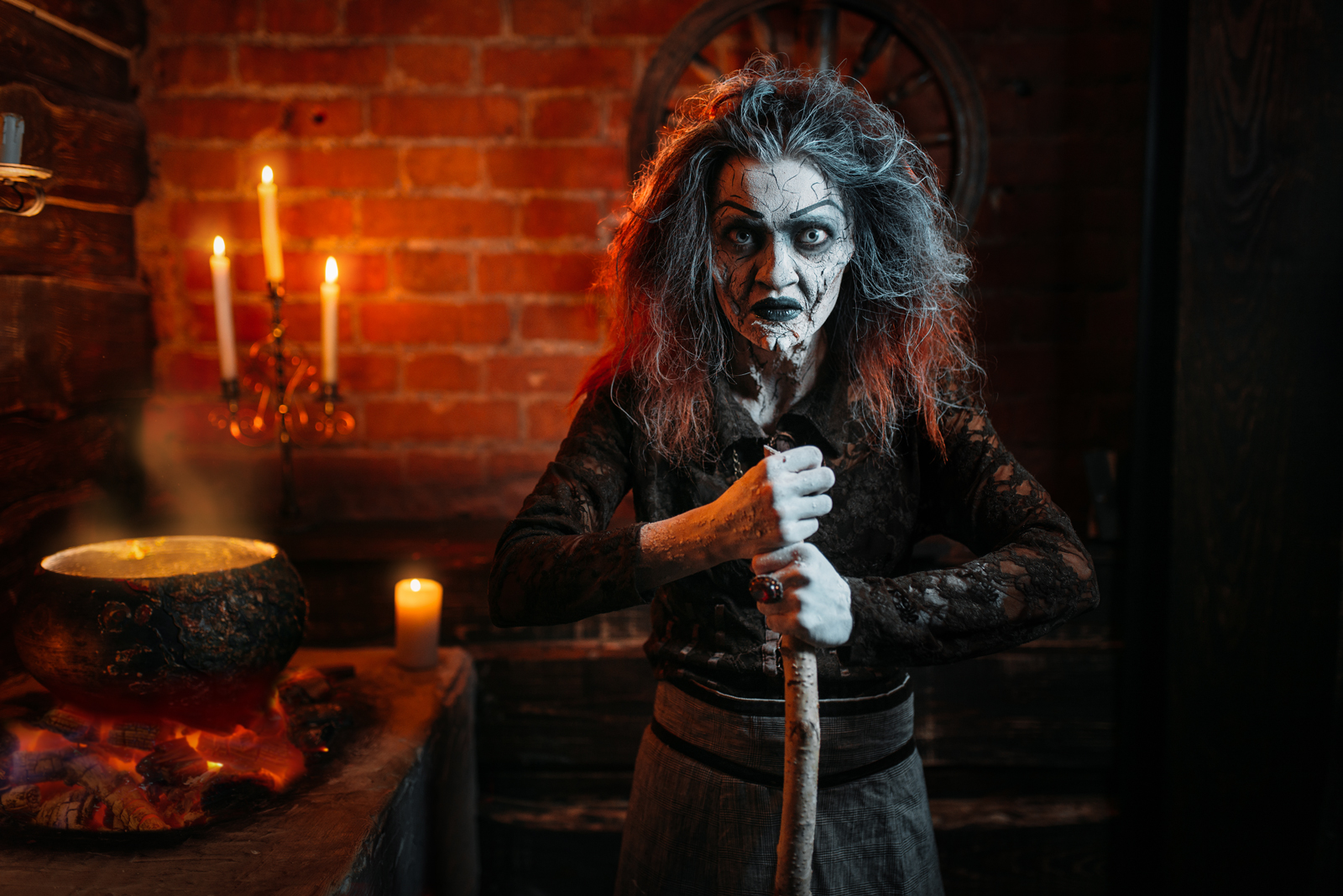
A scary Witch in Bergheim, Really? Photo by NomadSoul1 @ Envato
Trick-or-Treating: Two Very Different Realities
The famous American trick-or-treat tradition is difficult to replicate in France.
American suburbs, with their open lawns and neighbourly culture, lend themselves to door-to-door visits.
By contrast, many French homes are behind fences, gates or intercom systems, making spontaneous visits less practical.
As a result, French children often go trick-or-treating in very small groups, sometimes only visiting houses of people they know.
In rural areas, the custom is almost absent. Where it does occur, children say « des bonbons ou un sort »—“sweets or a spell”—a phrase that still feels less natural than its English equivalent.
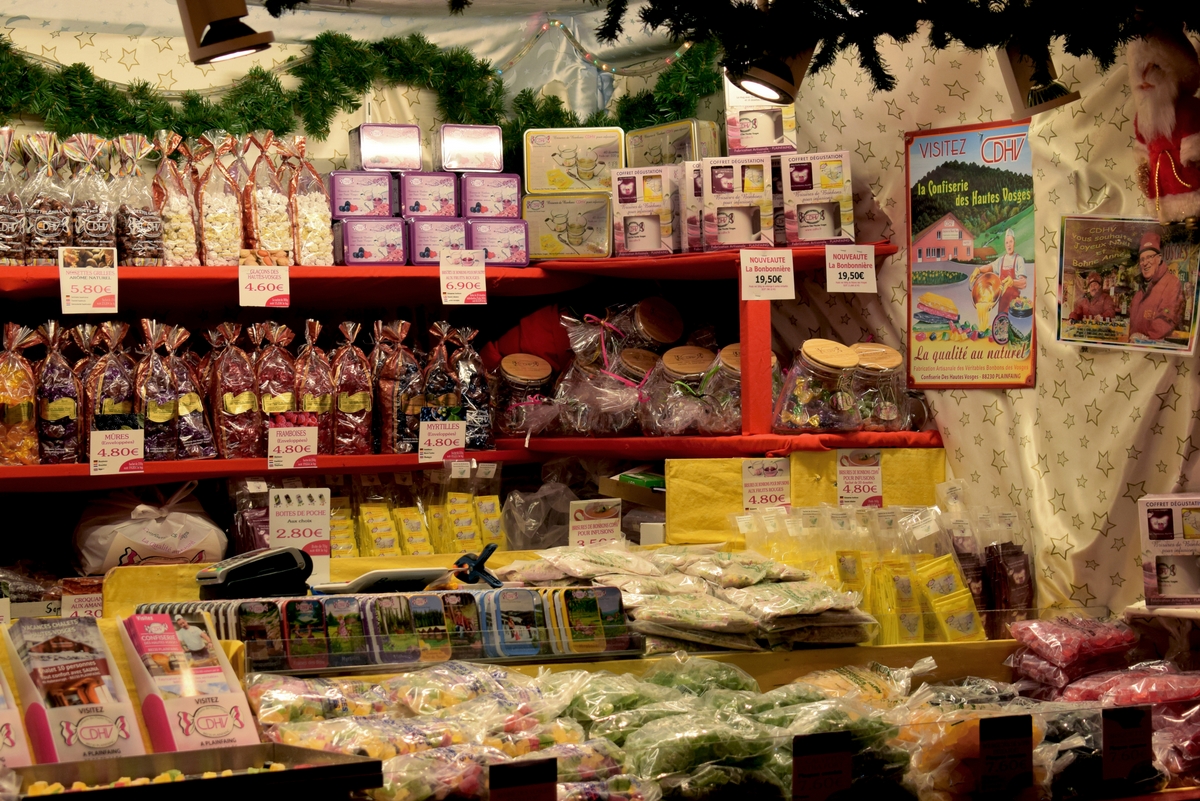
Fancy a sweetie from the Vosges mountains?
Economic Scale and Social Weight
In France, spending on Halloween remains modest compared to the US.
Surveys have shown that sales of flowers for All Saints’ Day (Toussaint) consistently outweigh spending on Halloween products.
For many French households, buying chrysanthemums for the cemetery remains a higher priority than buying plastic pumpkins or sweets.
This economic contrast reflects the cultural one: while Halloween is a national ritual in the USA, it remains a seasonal curiosity in France, concentrated among the young and in urban areas.
The Symbolic Competition with Toussaint
The strongest cultural difference lies in the calendar clash.
In the US, Halloween leads into Thanksgiving and Christmas—three secular family celebrations.
In France, however, Halloween sits directly before Toussaint, a solemn Catholic holiday dedicated to remembering the dead.
For many, this juxtaposition feels jarring: a playful night of fake skeletons followed by a day of quiet remembrance.
This contrast has prevented Halloween from becoming fully integrated into French traditions, since Toussaint already fulfils the cultural role of marking death and memory.
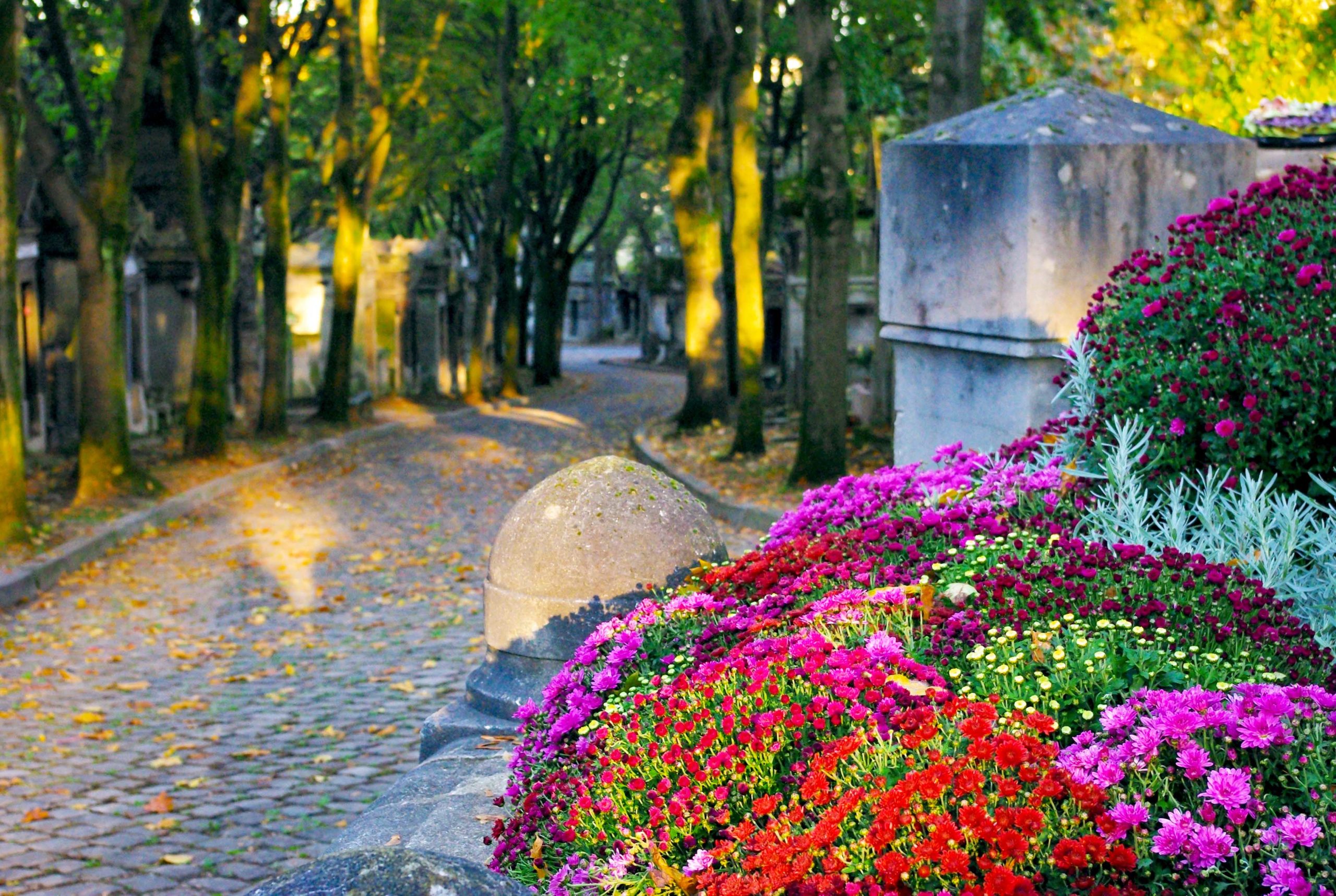
Toussaint - All Saints Day in France (Père Lachaise, Paris) © French Moments
Religious and Cultural Opposition to Halloween in France
The Catholic Church and “Holy Wins”
One of the strongest voices against Halloween in France has been the Catholic Church.
From the early 2000s, bishops and priests criticised the festival for trivialising death and promoting what they saw as a “culture of darkness”.
In 2000, the French Bishops’ Conference described Halloween as an “empty marketing operation that distorts the meaning of life and death.”
As a direct response, the Diocese of Paris launched “Holy Wins” in 2002—a play on words suggesting that holiness triumphs over Halloween.
On 31 October, parishes organised alternative events with music, prayer vigils and processions.
The idea was to redirect young people away from costumes and candy towards a celebration of faith.
Although “Holy Wins” never reached mainstream popularity, it symbolised a broader unease: Halloween’s rise was seen as competing directly with Toussaint, a deeply rooted Catholic feast that remains part of France’s cultural identity.
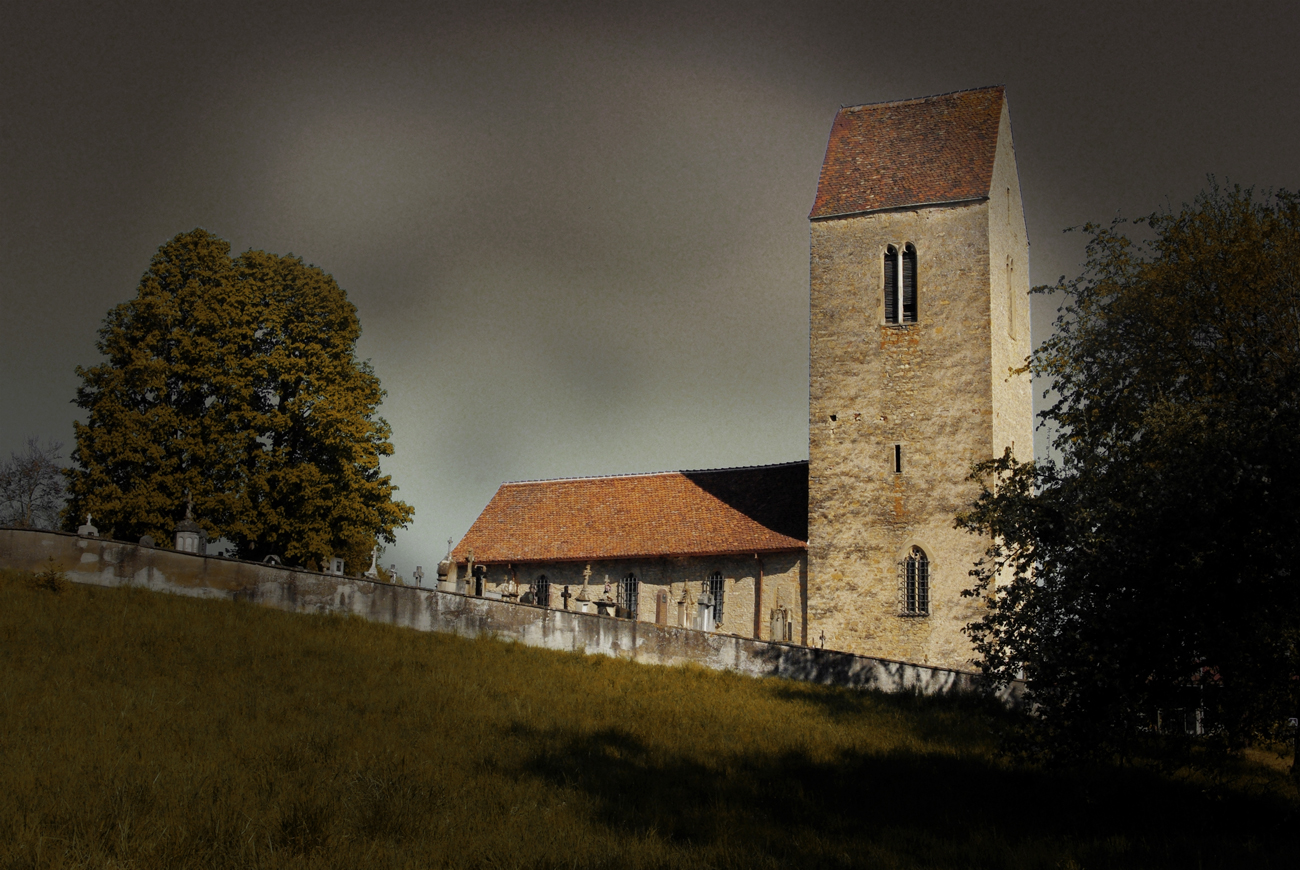
Chapel in Illfurth © French Moments
Other Religious Objections
Catholics were not the only group to object.
Jehovah’s Witnesses, Evangelical Christians and some Muslims also discouraged participation in Halloween, viewing it as a pagan or occult celebration incompatible with their beliefs.
Parents from these communities sometimes withdrew their children from school activities linked to Halloween, raising questions about inclusion and respect for religious conscience.
Cultural Resistance and Anti-Americanism
Beyond religion, Halloween has often been rejected as an “American import.”
For many French adults, especially older generations, Halloween felt imposed by supermarkets and advertising rather than embraced naturally.
The perception of it as “too commercial, too American” became widespread.
In the early 2000s, when anti-American sentiment was strong due to international politics, Halloween became a symbol of unwanted cultural globalisation.
Even today, surveys show that a majority of French people still view Halloween as over-commercialised and foreign, even if they enjoy some of its fun aspects.

Toussaint Day - Père Lachaise Cemetery © French Moments
A Question of Taste
Opponents also argue that Halloween in France encourages a culture of bad taste.
Gory costumes, fake blood and grotesque masks contrast sharply with the reflective and respectful mood of Toussaint.
For some, it feels inappropriate—especially for children.
This explains why many schools either limit Halloween activities to simple crafts or replace them with neutral autumn festivals.
An Uneasy Coexistence
Ultimately, opposition to Halloween in France highlights a cultural tension: the country is proud of its own traditions and cautious about adopting foreign ones wholesale.
Halloween’s playful mockery of death sits uneasily beside the solemnity of Toussaint, and its strong commercial packaging clashes with France’s attachment to authenticity in cultural rituals.
While the younger generation increasingly embraces Halloween as harmless fun, many adults continue to see it as a misfit in the French festive calendar.
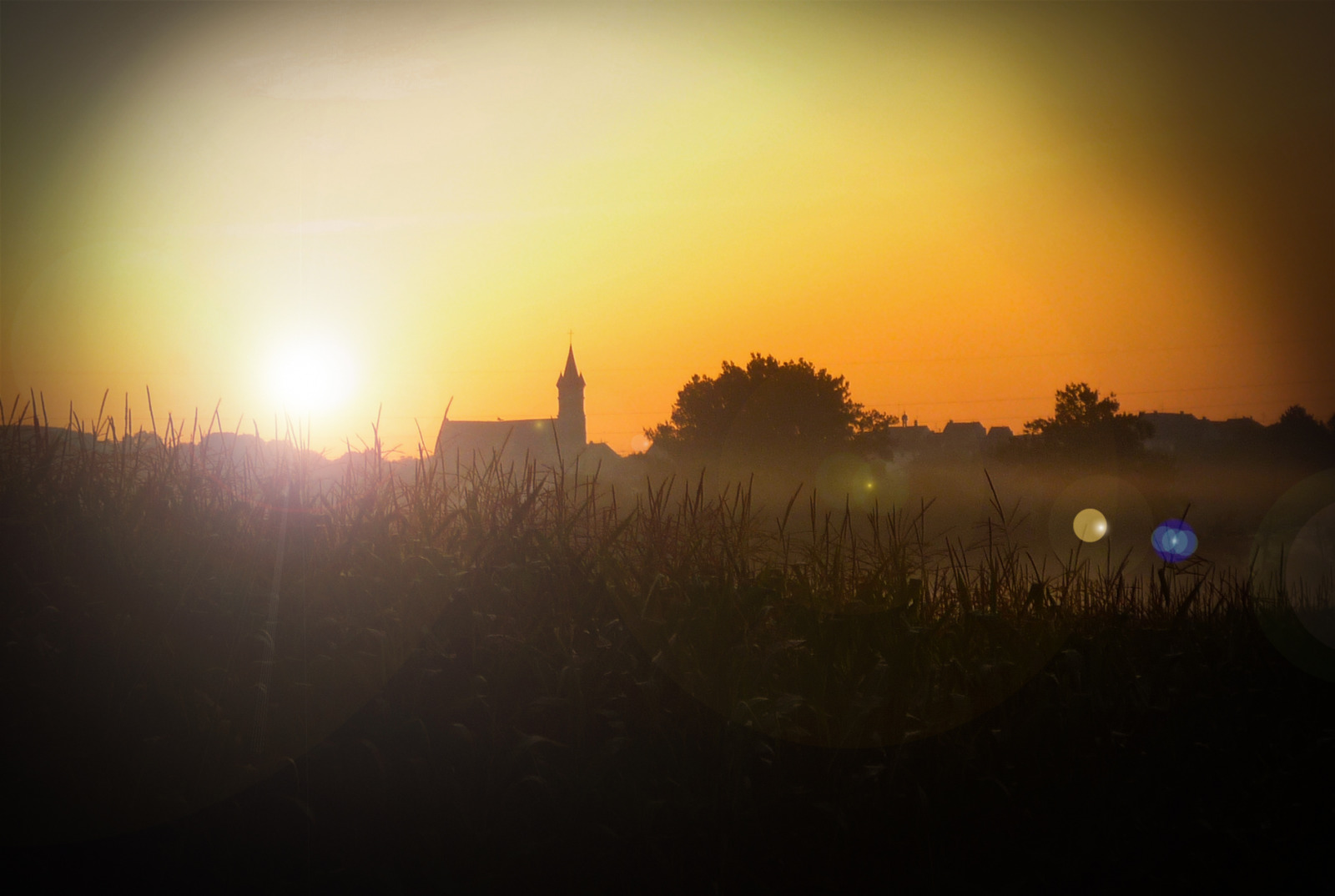
Alsace © French Moments
Eight Points Why Halloween Struggles in France
Despite its colourful presence in shops and schools, Halloween in France has never achieved the same level of popularity as in the United States.
Its rise, decline, and partial revival show that the holiday faces structural challenges that limit its integration into French cultural life.
Let's summarise what we've seen so far in eight points that show why Halloween struggles in France:
1 Lack of Historical Roots
Unlike Christmas or Easter, Halloween has no deep tradition in France.
Most adults never experienced it as children, which means there is little intergenerational transmission.
Without family memories to anchor it, the holiday feels artificial to many.
2 Competition from Toussaint
The biggest obstacle is the calendar clash.
Toussaint on 1 November is a public holiday centred on family gatherings and cemetery visits.
For many French people, celebrating skeletons and ghosts the night before seems out of step with the solemnity of the next day.
3 Religious Sensitivities
The Catholic Church and other religious groups see Halloween as trivialising death or even as a pagan/occult celebration.
Their opposition, particularly through campaigns like Holy Wins, has reinforced doubts among practising families.
4 Perceived as Too Commercial
Halloween in France was introduced by advertising and retail chains rather than tradition.
This origin has stuck: many people see it primarily as a tool for supermarkets to sell sweets and plastic decorations.
5 Anti-American Perceptions
The holiday has long been criticised as a symbol of cultural globalisation and Americanisation.
Especially in the early 2000s, political tensions reinforced resistance to adopting an American-style festival.
6 Limited Outside Major Cities
Halloween thrives in urban areas, where bars, schools and communities organise themed events.
In rural France, however, trick-or-treating is rare, and many villages remain untouched by the celebration.
7 Cultural Reservations About Death and the Supernatural
French society, shaped by rationalism and Catholic heritage, is often uncomfortable with the grotesque, gory side of Halloween.
While some young people embrace it, older generations tend to find it distasteful or inappropriate.
8 A Crowded Festive Calendar
France already boasts a rich festive calendar: Bastille Day, the Fête de la Musique, Christmas markets, regional carnivals.
Halloween has to compete with established, homegrown traditions that feel more authentic to French culture.
In short: Halloween in France has grown, declined, and revived, but it remains a secondary festival.
It appeals to children, teenagers and urban youth, but struggles to win the same universal acceptance as other French celebrations.
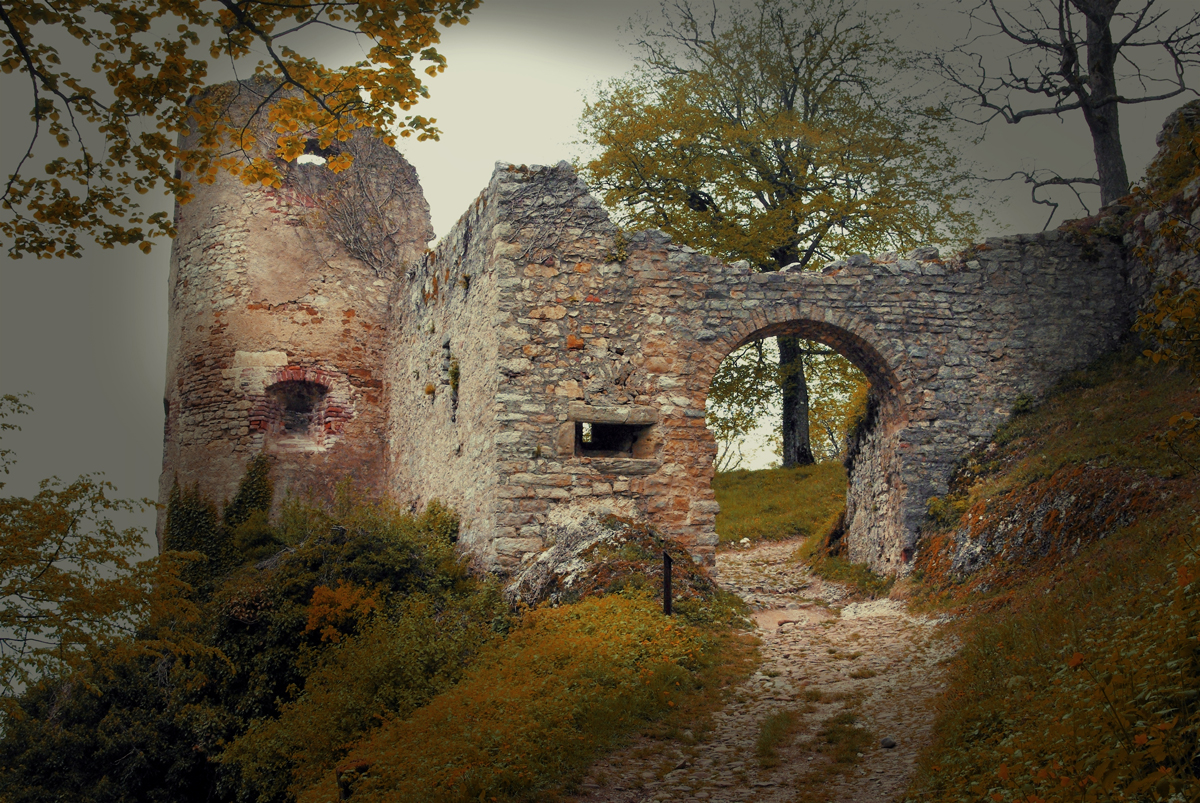
The entrance to the castle of Ferrette © French Moments
Current Trends and the Future of Halloween in France
Growing Enthusiasm Among the Young
Today, Halloween in France is mostly driven by the younger generation.
Surveys show that over three-quarters of 18–24 year-olds take part in some way—whether through parties, costumes, or themed social media content.
For these young adults, Halloween is less about tradition and more about creativity, fun, and community.
A Seasonal Commercial Event
Retailers continue to see value in Halloween, especially in the confectionery sector.
Sales of sweets rise sharply every October, with 2021 marking a 16% increase compared to 2020.
Shops in big cities decorate their windows, cafés offer pumpkin-flavoured menus, and theme parks like Disneyland Paris put on elaborate Halloween shows.
Digital and Cultural Influence
The role of social media has been crucial in recent years.
TikTok and Instagram popularise Halloween make-up tutorials, spooky home décor, and themed recipes, fuelling participation among teenagers.
Streaming platforms like Netflix, with their endless supply of horror series, also feed the Halloween atmosphere throughout October.
Limits to Expansion
Yet even with this renewed energy, Halloween in France is unlikely to become a mainstream, nationwide festival on par with Christmas or Bastille Day.
Older generations remain sceptical, rural areas participate little, and Toussaint continues to dominate the cultural calendar at the same time of year.
The Likely Future
The most probable scenario is that Halloween will remain a niche but vibrant festival, embraced by children, teenagers, and young adults in urban centres.
It will continue to grow as a seasonal marketing opportunity and as a creative outlet, but will never fully displace the traditional weight of Toussaint.
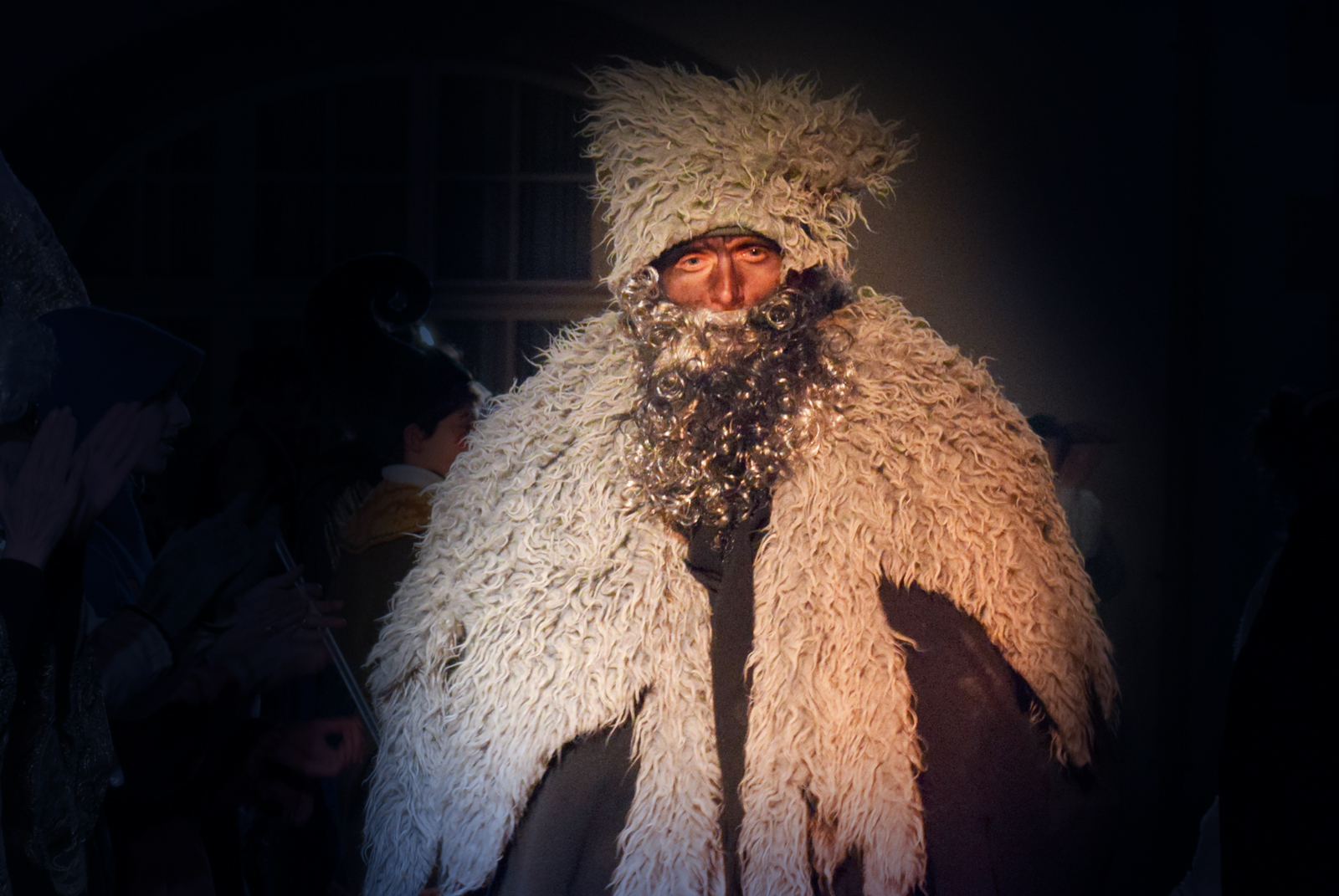
The villain of Halloween in Alsace: Hans Trapp © French Moments
Conclusion
The story of Halloween in France is one of cultural negotiation.
Imported in the 1990s through advertising campaigns, it boomed and then collapsed under accusations of being “too American” and “too commercial.”
Since the 2010s, however, it has been reborn—fuelled by younger generations, schools, and the influence of social media.
Yet Halloween still faces barriers: the solemnity of Toussaint, resistance from religious communities, and scepticism from older generations.
For many French people, it remains an exotic add-on to the calendar rather than a tradition of their own.
And perhaps that is what makes Halloween in France distinctive: it is not an entrenched ritual, but a playful seasonal celebration, enjoyed above all by the young.
For travellers in France during October, experiencing Halloween alongside Toussaint offers a unique insight into how global and local traditions coexist.
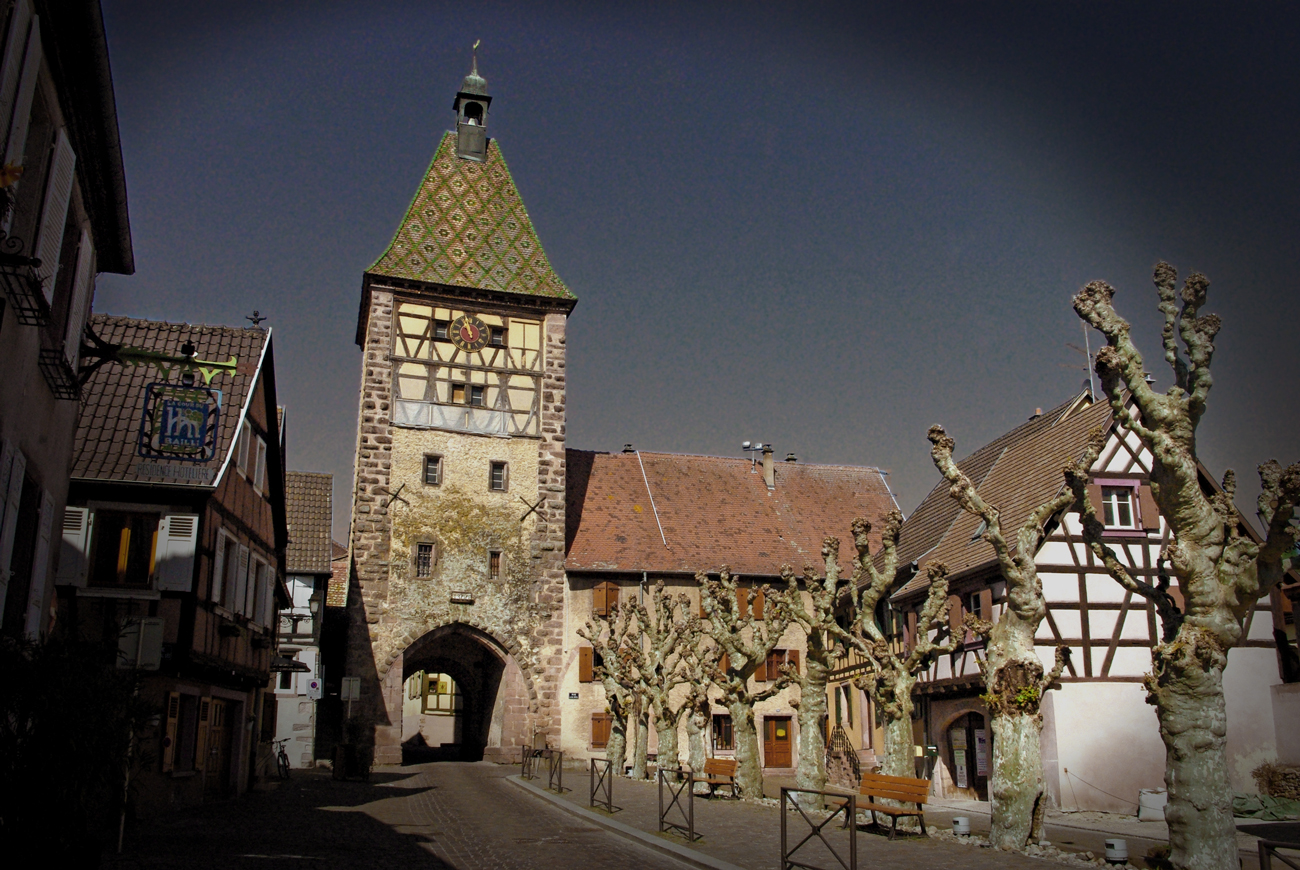
Bergheim: the Obertor © French Moments
Sources & Further Reading
If you’d like to dig deeper into the strange story of Halloween in France, here are some of the sources I drew on while writing this piece:
Feeling confused about the spirit of Halloween and Toussaint? – French Institute
Pourquoi Halloween marche-t-il moins en France qu’aux US? – French Morning
L’Église catholique tente de conjurer le succès – Cathocambrai
Halloween: un budget moyen de 85 euros cette année – Comarketing-News
La citrouille tient la vedette chez les maraîchers – Orange Actu
Pourquoi les costumes d’Halloween aux États-Unis ne font pas forcément peur – Reddit
Faut-il encore fêter Halloween ? – Master 2 Communication et Territoires

